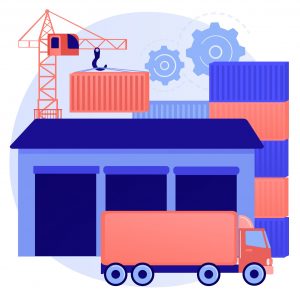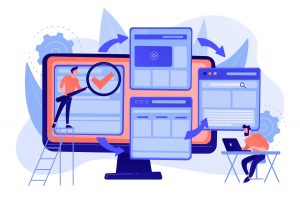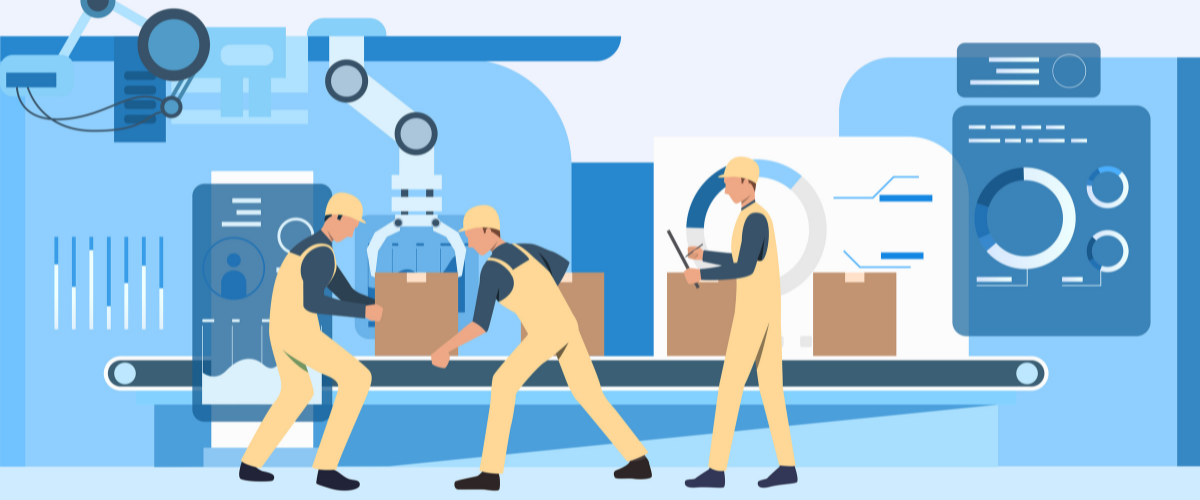6 Trends about manufacturing industry you should not miss
The Manufacturing Landscape

Manufacturing Industry is amid Digital Transformation, and the world around us is changing. Manufacturers incorporate new technology, such as the Internet of Things (IoT), cloud computing, AI and machine learning, to increase operational efficiencies. When data from operations is coupled with ERP, supply chain, customer service, and other enterprise systems, new levels of visibility and insight are created from previously isolated data.
The Industrial Revolution began in the late 18th century and caused a significant impact on the world’s economy. It raised the number of job opportunities and wages in various industries. People preferred to work in factories for higher pay and benefits. In addition, it increased the demand for homes in cities, which fast-tracked the city’s growth. As a result, new inventions emerged, and the standard of living started changing.
Now, we will explain how the trends in manufacturing have completely changed the course of industry and its impacts on day to day operations.
6 trends in Manufacturing Industry
Inventory Management System
In the digital transformation era, manufacturers have moved towards carrying out their processes according to their customers’ requirements.
Production planning, in response to demand, is the primary business goal. Inventory Management System can be improved to avoid wastage and stockouts, therefore decreasing loss. Easy and quick access to the number of inquiries received or sales agreement created can help with Forecast vs Actual revenue. CRM integrated real-time data of management process and operation-based activities can help you with decisions based on data.
Some significant benefits of using CRM include the following:
- Better customer retention
- Increased sales and detailed analytics
- Higher productivity and efficiency
- Centralized database of information
- Communication with potential customers
Supply Chain using IoT (Internet of things)
In operations such as supply chain, the Internet of Things demonstrates its full potential. Fleet managers can use management, forecasting, and supervision software to increase distribution efficiency and enhance transparency. It has the potential to improve every aspect of the supply chain.

Here are the most prominent effects of the IoT supply chain revolution:
- Location tracking in real-time: The Internet of Things provides supply chain managers with a continuous stream of real-time information specifically about product location and transit conditions.
- Monitoring the state of the storage facility: Environmental sensors allow the managers to monitor the shipment process, including the temperature inside the vehicle, pressure, humidity, and other variables that could jeopardize the product’s integrity.
- Estimate the product’s movement and arrival time: The level of detail available to managers due to IoT devices improves decision-making quality and boosts the precision of delivery forecasts.
- Helps in finding stocks in the warehouse: IoT is a warehouse technology trend that improves warehouse staff efficiency by spending less time locating deliveries. Workers will therefore know the exact aisle for a specific parcel thanks to real-time GPS monitors.
- Improve contingency planning: IoT devices assist managers in route planning by considering the number of accidents or other delays on the highway.
Modern-day automation
Of the many trends in the manufacturing industry, automation improves processes such as production, handling, and distribution. It was a result of the development of powered machinery and equipment during Industrial Revolution. The upcoming significant automation offered were Computer-Aided Design (CAD) and Computer-Aided Manufacturing (CAM).
Following are a few examples of automation in the Modern Workplace:
- Integration automation is where machines mimic human tasks and repeat them once defined in the machine rules.
- Artificial Intelligence (AI) automation is the most complex and challenging degree of automation used by 21st-century organizations. Here, machines will actively “learn” and make decisions by analyzing and taking patterns from previous experiences.
- Hyper automation is a concept of combining machine learning, software, and automation tools in the workplace. It maximizes automation processes and boosts productivity. It also provides intelligence, power and the capability to translate intelligence into action by merging various cognitive functions with automation technology.
Manufacturing Analytics

Manufacturing analytics deliver real-time and historical insight into essential performance parameters to manage, monitor and increase operational efficiency. It is part of a more significant transformation known as Industry 4.0. As a result, factories are projected to transform into self-running and healing entities by embracing emerging innovations such as the cloud and the Internet of Things (IoT). Moreover, predictive and big data analytics, the Industrial Internet of Things (IIoT), Machine Learning, and edge computing are all used in manufacturing analytics. Above all, it helps develop better and scalable factory solutions, provides actionable knowledge and gives context-awareness in real-time.
Digitizing the businesses, lowering costs, enhancing quality, and reinventing the customer experience can offer decision-makers a competitive advantage. By putting their large volumes of data to work, manufacturing analytics is assisting organizations in increasing their efficiency and profitability. Thus, manufacturers can unearth insights to make better strategic decisions.
Customer Relationship Management for B2B and B2C
Business to Business Customer Relationship Management (B2B CRM) refers to the systems, technology, strategies, and processes that assist B2B organizations manage their connections with current and potential customers. It enables businesses to understand their contacts, needs, and where they are in the buyer’s journey.
Following are five B2B CRM benefits that help sales and marketing teams coordinate:
- Getting Teams to talk in the same language
- Personalized communication
- Close the Real-Time Feedback Loop
- Use Lead Scoring to Your Advantage i.e. based on participation.
- Deal stages and pipelines that represent sales cycles
However, in the B2C arena, CRM technology has undergone gradual progress. The rise of the e-commerce industry as one of the most profitable business model has prompted major CRM solution providers to offer a slew of features targeted to this market.
Following are the benefits of having CRM for the B2C business model-
- Customer Segmentation
- Access to Most Relevant Information
- Effective Use of Time
- Centralized Social Media Interactions
- Payment Data
- Order Management
Digital optimization of sales and marketing

Digital marketing is the need of the hour because of its outreach and potential. The traditional way of marketing has lost its impact. Besides, most businesses opt for digital marketing today to increase outreach, create brand awareness, generate leads, and cost-effective marketing solutions.
The following are some of the advantages of Internet marketing:
- The capacity to communicate with prospects and understand what they want
- The ability to tap into a worldwide market
- Traditional marketing approaches cost more money than modern approaches
- Get to know your audience and allow them to know you personally. It establishes build brand loyalty.
Conclusion
With massive churning and changes in the industrial landscape globally, new opportunities for manufacturers opened up. The new way of production, supply, procurement, marketing, selling and distribution is transforming the old and traditional processes in the industry. With growing demand and supply, the industry needs to change the way of its functioning and operation. With all that in mind, this blog touched every aspect of new innovative technology and trends in the manufacturing industry. These can be helpful for the industry to grow and build a great organization.
Lower costs, more efficiency, easier inventory management, payback cycles, and increased output are evident and measurable benefits of the new manufacturing industry. All this is achieved through the planned and thoughtful development. The benefits of the industrial revolution are also felt in developing countries like India, where technological advances were neglected in the past. Now, the question is, What’s the result? Professionals on the shop floor and manufacturers get to work in the future factories, improving their business and growth while providing customers with precisely what they desire.
If you want to know more about our products, visit our Page, follow us on LinkedIn or Contact us.




